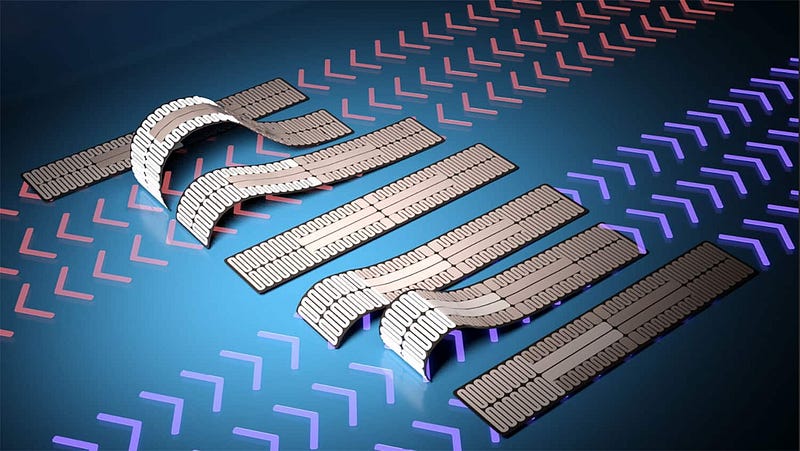Innovative Caterpillar Robot: Pioneering Soft Robotics Technology
Written on
Chapter 1: Introduction to Soft Robotics
The field of soft robotics is rapidly advancing, focusing on the development of agile, adaptable, and dexterous robots. These softbots are becoming integral to locomotion, particularly in challenging environments. Recent studies, including one from Carnegie Mellon University, have highlighted the potential of resilient softbots.
Section 1.1: Caterpillar-Inspired Innovation
In an exciting development, researchers at North Carolina State University have designed a soft robot that mimics the movement of a caterpillar. This innovative robot can navigate forward, backward, and even squeeze through tight spaces. Its movement is guided by a unique arrangement of silver nanowires that utilize thermal energy to control bending, enabling precise steering in any direction.
Subsection 1.1.1: Overcoming Design Challenges

Designing soft robots capable of bidirectional movement poses significant challenges in the soft robotics field. This research introduces a solution through the integration of nanowire heaters, allowing for dual-direction control. By adjusting the heating pattern, researchers can dictate which segments of the robot bend, as well as control the extent of that bending through heat intensity.
Section 1.2: Biomechanics and Control Mechanisms
Yong Zhu, the lead author, states, “We’ve drawn inspiration from the caterpillar’s biomechanics to mimic that local curvature, and use nanowire heaters to control similar curvature and movement in the caterpillar-bot.”

The caterpillar-inspired soft robot comprises two distinct polymer layers with different heat responses. The bottom layer contracts when heated, while the top layer expands. This expanding layer features a silver nanowire pattern with multiple lead points for electric current input, allowing researchers to selectively heat sections of the nanowire pattern.

By increasing the current applied to the robot, researchers can accelerate its movement in either direction. However, they identified an optimal cycle that allows the polymer to cool and relax before contracting again, ensuring effective mobility. Rapid cycling can hinder the robot’s ability to relax, thus limiting its movement.
Chapter 2: Practical Applications and Future Directions
The research team demonstrated their capability to maneuver the caterpillar robot through extremely narrow gaps, akin to guiding it under a door. This level of control not only facilitates forward and backward movement but also allows for adjustments in upward arching during navigation.
The energy-efficient method developed for soft robot motion holds promise for future enhancements. The team plans to integrate this locomotion technique with sensors and other advanced technologies, paving the way for applications in search-and-rescue operations and beyond.
The complete research findings were published in the Journal of Science Advances.